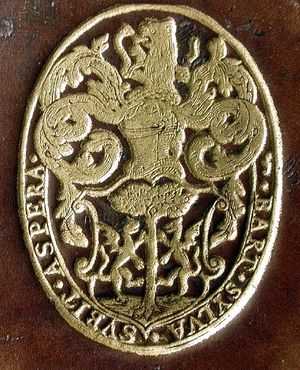William Paddy 1554-1634
Sir William PADDY 1554-1634
Biographical Note
Born in Middlesex, son of Roger Paddy, merchant. BA St John’s College, Oxford 1573, after which he moved to Leiden to study medicine; his MD awarded there in 1589 was incorporated as an Oxford MD in 1591. Fellow of the Royal College of Physicians 1591, censor 1595 and 1597-1600, Master of the College four times between 1609 and 1618. Physician to William Cecil, 1594-1602. Knighted by James I, and appointed his personal physician, 1603 (a post he held for the rest of the King’s life). MP for Thetford, Norfolk 1604-11. Paddy was a prominent and influential member of the medical profession in London during the early 17th century, involved in the resolution of numerous controversies involving medicine and the responsibilities of its various groups of practitioners; he typically defended the position of the Royal College of Physicians, and its academic traditions. He was opposed to the publication of medical information in English, and sought to suppress Helkiah Crooke’s Mikrokosmographia (1615) with its anatomical descriptions.
Books
Paddy accumulated books and manuscripts throughout his life and gave many of them to St John’s College, Oxford. c.1602 he gave the College ca.1120 works in 680 volumes, predominantly but not exclusively medical; further books were given during his lifetime and more were bequeathed (along with most of his estate). His will lists a number of specific, special books to be given to the College, including an annotated prayer book used by James I at the time of his death, “my rich and extraordinary Ortelius”, and other atlases. He also noted that the College had “unkindly neglected” to assist him in the choice of 1000 books which he intended to bequeath, and that he had therefore made a list himself for his executors to use. He directed that a catalogue should be made of all the books he had given to St John’s, that each book should be inscribed, and that the College should be empowered to exchange or sell any books which were duplicates or not of the best edition.
Paddy was friendly with other leading antiquaries and collectors of his generation, including Robert Cotton and Archbishop Laud, and there is evidence of his having borrowed manuscripts from St John’s for other’s use. During his lifetime he also donated books to his old school, Merchant Taylors’ in London. Examples: numerous in St John’s, Oxford; Christ Church, Oxford f.5.33; Otago University Library Itb 1562G (Shoults).
Characteristic Markings
Many of the books given to St John’s in 1602 are in contemporary continental bindings. Paddy used an armorial binding stamp, found on some of his books.
Sources
- British Armorial Bindings.
- Fuggles, J. A history of the library of St John’s College, Oxford, Oxford BLitt thesis, 1975.
- Hoare, P. (gen.ed.), The Cambridge history of libraries in Britain and Ireland. 3 vols. Cambridge, 2006. I 468-9.
- Kassell, Lauren. "Paddy, Sir William (1554–1634), physician." Oxford Dictionary of National Biography.
- Morgan, P. Oxford libraries outside the Bodleian. 2nd edn, Oxford, 1980
- Pady, D. S. ‘Sir William Paddy’, Medical History 18 (1974), 68-82.
- Fine bindings 1500-1700 from Oxford libraries, 1968, no.39.
